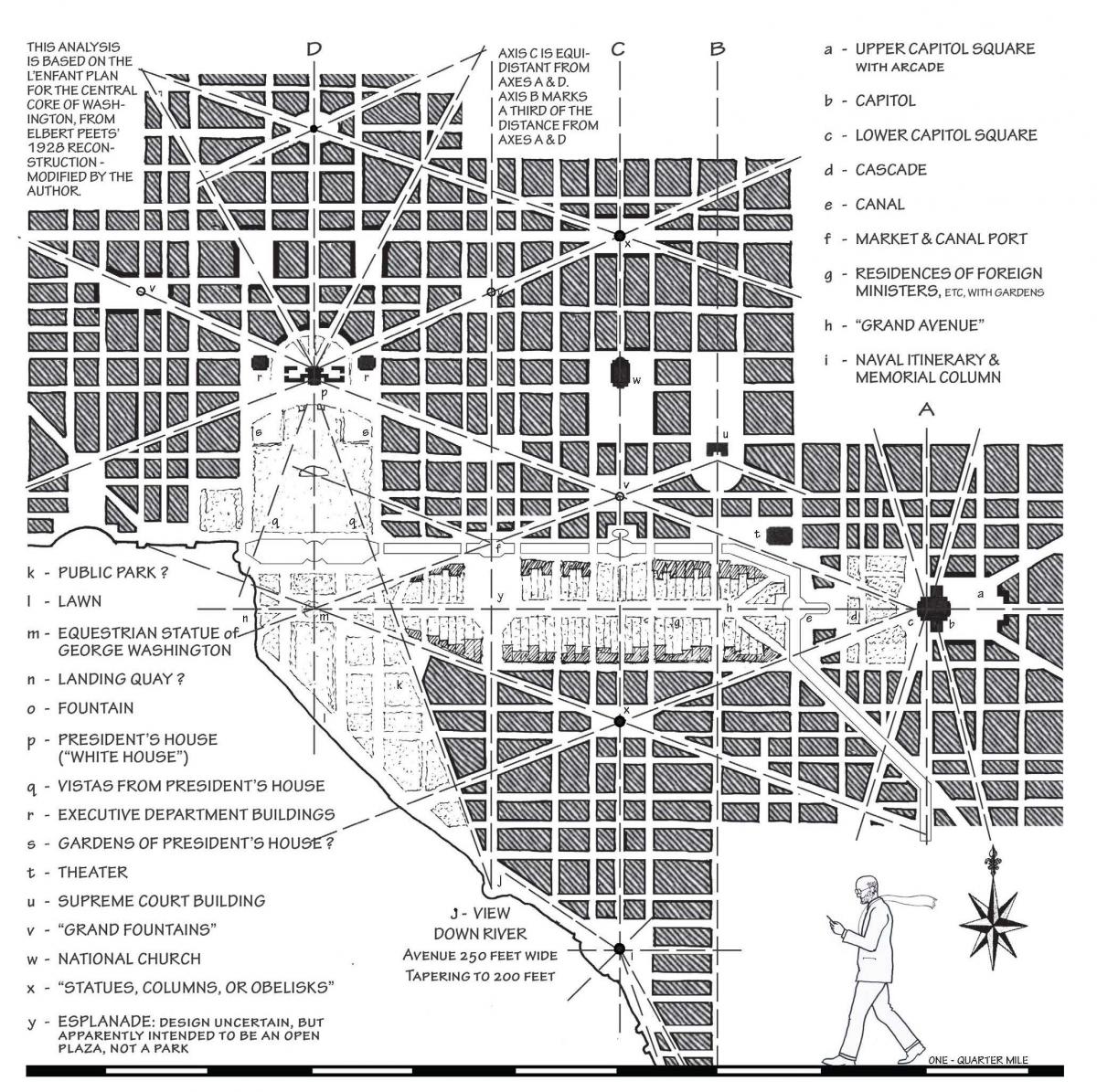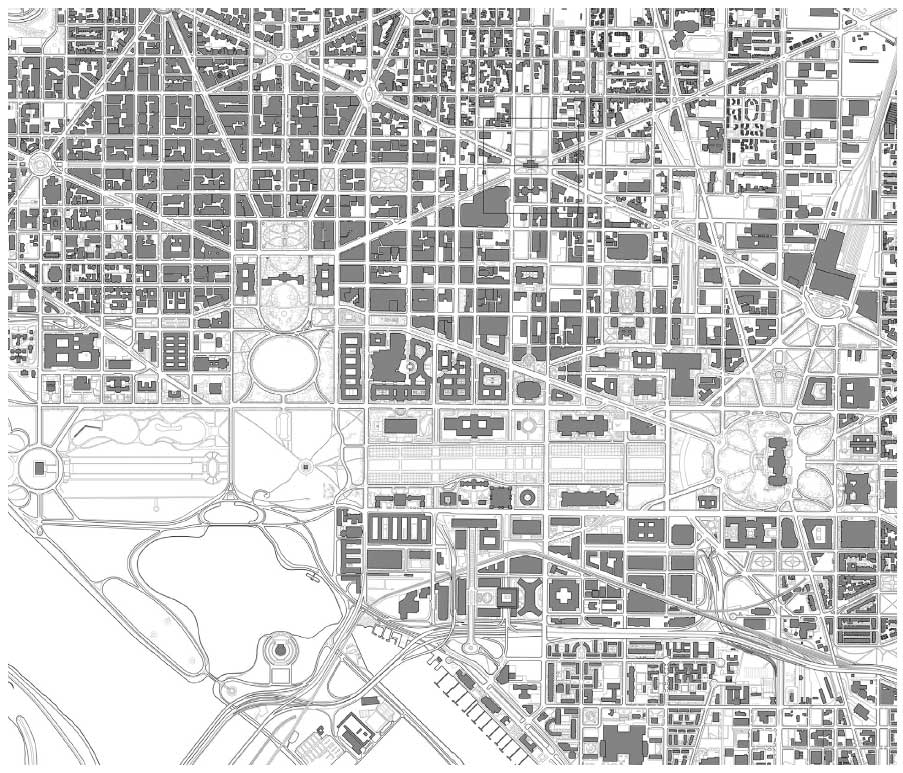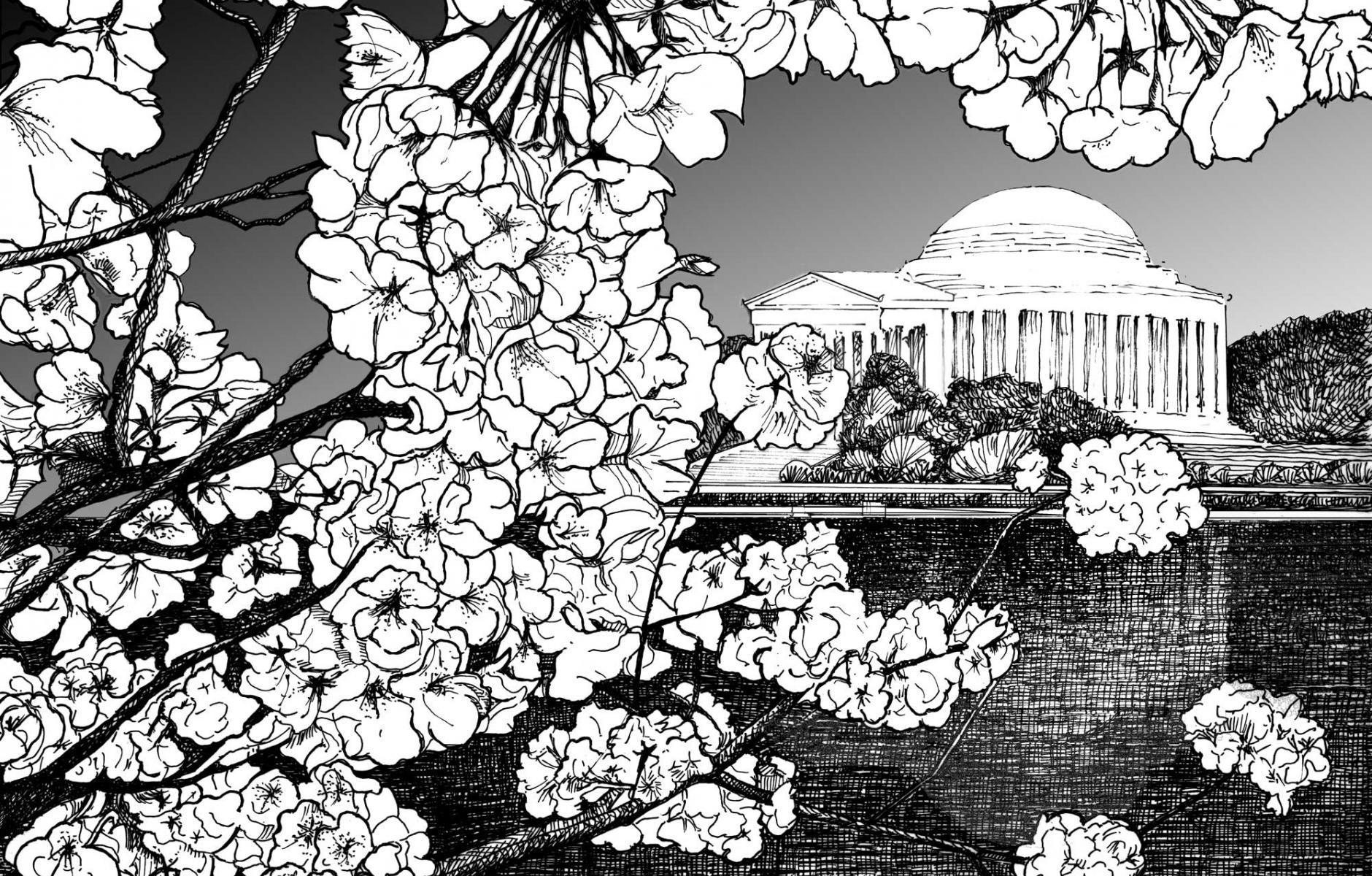
Washington Drawings: Abe to Zoo
Dhiru A. Thadani has a unique knowledge of Washington, DC. Prior to the Internet and Google maps, Thadani led a group of volunteers on a 13-year effort, starting in the 1970s, to exactly draw the footprint of buildings and public spaces of the nation’s capital. This plan, based on the famous 1748 Nolli plan for Rome, was a monumental and ambitious project with no apparent monetary goal in mind—that is to say, a labor of love. That description could describe many projects throughout the career of Thadani, the Bombay-born architect who is now one of America’s most respected urban designers.
The latest labor of love also involves DC, Thadani’s adopted city for nearly 50 years. Washington Drawings: Abe to Zoo, grew out a restless pandemic need. Thadani draws constantly and travels a great deal. The pandemic kept him close to home, so he began making excursions around DC to record sites of personal interest. The result is 26 full-page drawings with text for every letter of the alphabet, plus more renderings and plans in the introduction.
For urbanists who want a quick, enlightening, visually rich tour of the US capital city, I highly recommend this black and white, self-published book. Washington Drawings is attractively designed and full of insights into DC’s history, places, people, and urbanism.
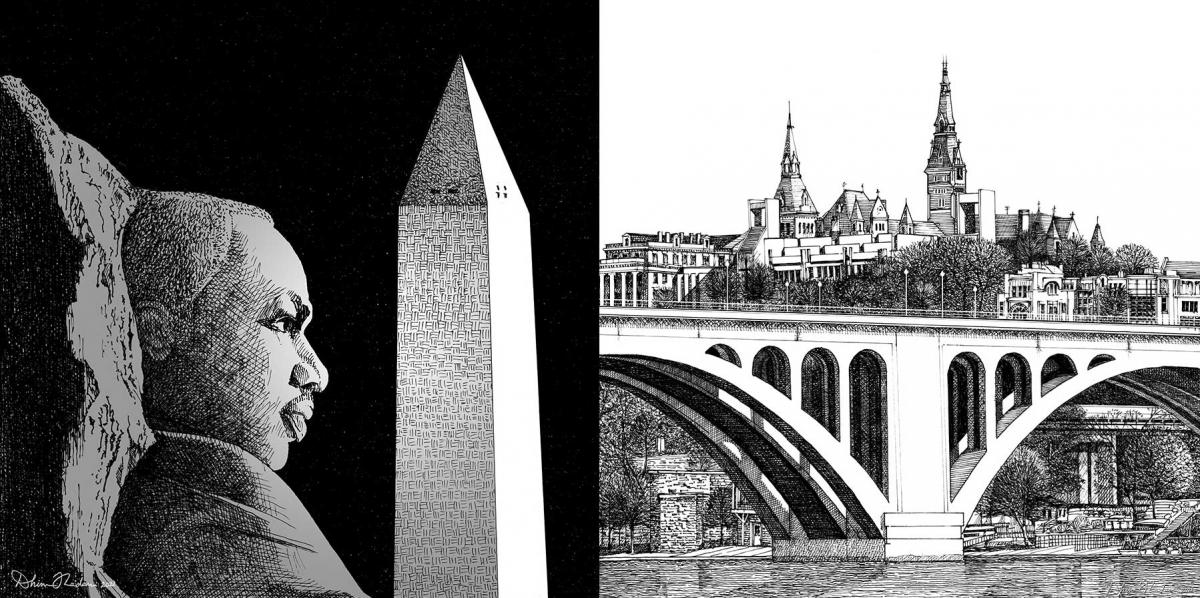
Two plans were critical in shaping the city: The first by Pierre L’Enfant in 1791, and the second the McMillan plan of 1902, chaired by Sen. James McMillan and involving the most noted designers of the day: Daniel Burnham, Charles McKim, Charles Moore, Frederick Law Olmsted Jr.; and sculptor Augustus Saint-Guadens.
Meanwhile, Georgetown is a place apart, with no Metro stations and not well connected to the DC street grid—but that’s because it was founded and surveyed 40 years before the US capital moved to its current location. Georgetown, which appears in a few of Thadani’s drawings, was then a separate city where the deals were made to acquire land for the capital district. In 1795, a US Congressional act repealed Georgetown’s local ordinances and renamed its streets in accordance with the rest of the city. Local authority was usurped, but since then Georgetown has been home to some of the nation’s most influential people. The C&O Canal was built to transport goods from the nation’s interior to Georgetown, which was the farthest point upstream that an ocean-going ship could navigate the Potomac River.
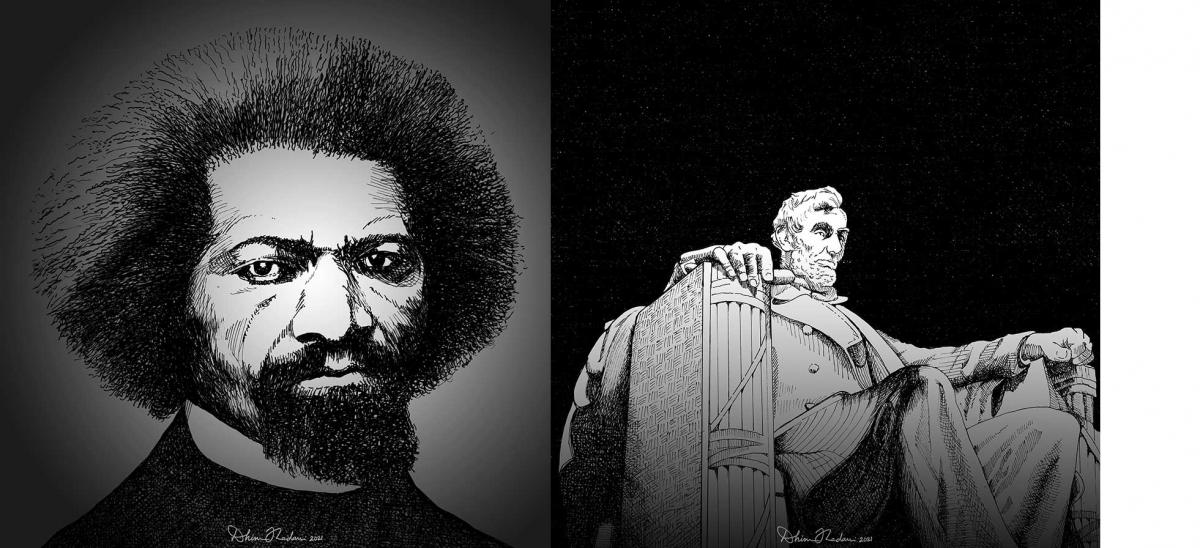
Among the most striking drawings is a portrait of Frederick Douglass. The drawing is accompanied by a biography of his many notable achievements, especially those that relate to the US capital, where he lived in the Southeast quadrant. Many of the drawings focus on people who have made their mark on DC, including Martin Luther King Jr., Abraham Lincoln, and L’Enfant, who died a pauper despite a legacy that will last as long as the city.
Included are images that relate to present-day urbanism, such as the H Street streetcar, which introduced this mode of public transportation after a 50-year hiatus. Streetcars traversed the entire city during the first half of the 20th Century, but the last historic line closed in 1962. The H Street streetcar, two miles long, opened in 2016 along a revitalized corridor.
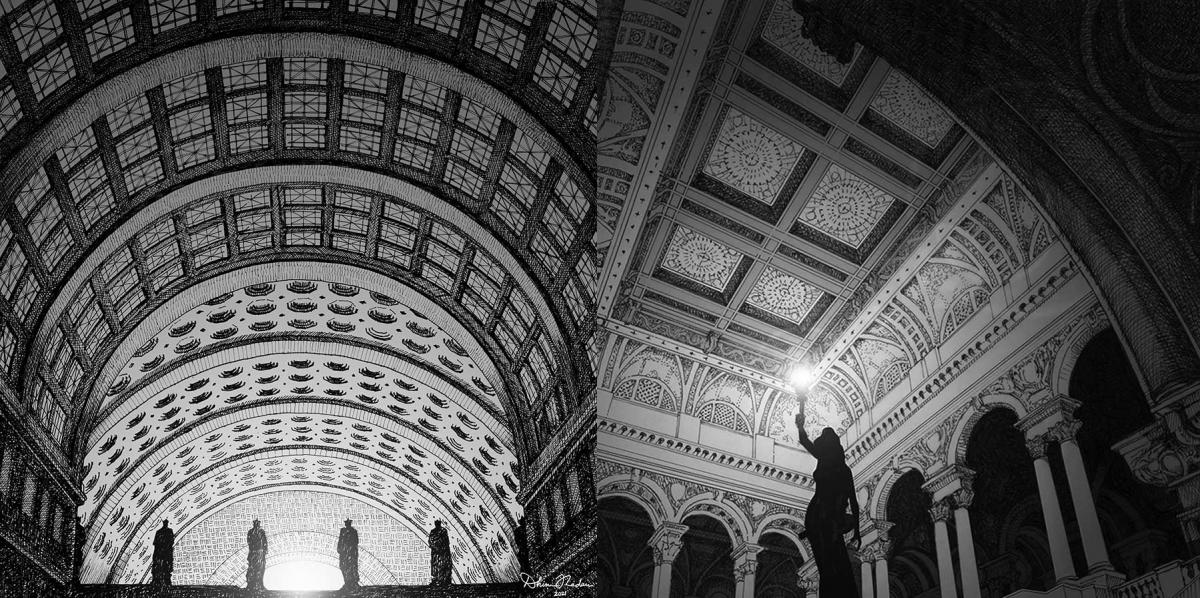
Thadani went across the Anacostia River to Southeast DC to draw St. Elizabeths Hospital, a longtime psychiatric hospital recently redeveloped as affordable housing. At its peak in the 1950s, the hospital housed 8,000 patients. Despite the recent reuse, and the beauty of the historic buildings, Thadani is critical of planning decisions made in the transition.
“St. Elizabeths Hospital site was understandably organized as a secure campus with none of the urban qualities embodied in the L’Enfant plan. The site’s redevelopment opened the door for integrating the street network and location with the disinvested and much-maligned Southeast Anacostia neighborhood. Despite several master plans made over the decades, the ongoing redevelopment keeps the super-block structure. It fails to successfully combine the campus and city or capitalize on the proximity of the Congress Heights Metro Station.”
The comment is entirely on target, and a rare criticism in a book that mostly appreciates beauty, history, and urban points of interest. A few of the drawings depict some of the more beautiful interiors, such as Library of Congress and Union Station. Urbanists will love so many details and insights in this easy-to-read book. A picture tells a thousand words, so Washington Drawings is a quick, and not necessarily linear, read. Start at the end, the beginning, or the middle, but if you love DC, architecture, or urban places, it’s well worth the price.
